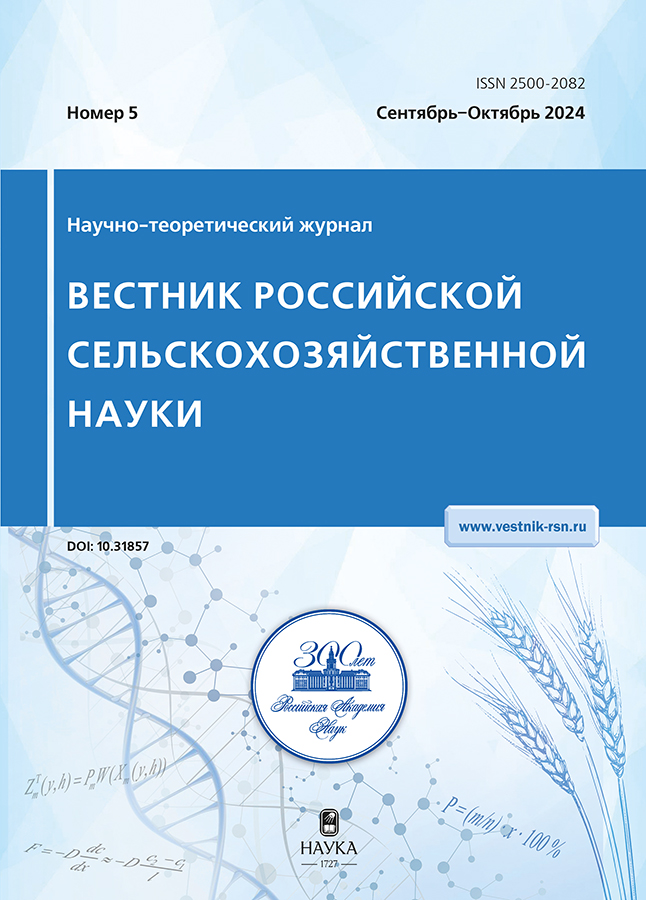Молекулярные и морфофункциональные основы развития множественных конгенитальных аномалий глаз у лошадей при наличии серебристого гена на примере советской тяжеловозной породы
- Авторы: Борисова А.В.1, Рамазанов М.В.2, Телешова Е.Б.2
-
Учреждения:
- ФГБНУ ВНИИ коневодства
- ГОУ ВПО «Астраханский государственный медицинский университет»
- Выпуск: № 5 (2024)
- Страницы: 89-94
- Раздел: Зоотехния
- URL: https://vietnamjournal.ru/2500-2082/article/view/659255
- DOI: https://doi.org/10.31857/S2500208224050184
- EDN: https://elibrary.ru/zrzijv
- ID: 659255
Цитировать
Полный текст
Аннотация
В статье конкретизируются клинические данные по молекулярному и морфофункциональному началу развития множественных конгенитальных аномалий глаз (Equine Multiple Congenital Anomalies – MCOA), сцепленных с серебристым геном, на примере советской тяжеловозной породы лошадей. Представлены рекомендации для владельцев по их содержанию и медикаментозной поддержке. Исследование провели на основе данных селекционного центра ВНИИК, генетического тестирования и офтальмологического осмотра. В фокус-группу вошло 26 лошадей, обследованных на наличие серебристого гена. Лошадей советской тяжеловозной породы нужно тестировать на присутствие серебристого гена. Однако наличие MCOA, сцепленных с серебристым геном, не считается показанием к выбраковке лошадей в связи со статусом данной породы как исчезающей. Партнер для случки должен быть без генетических аномалий, чтобы они не распространялись при бесконтрольном скрещивании. Необходимы регулярное наблюдение офтальмолога и четкое выполнение его рекомендаций для предотвращения развития инфекционных осложнений и быстрого прогрессирования заболевания. Лошади, гомозиготные по серебристому гену, должны содержаться в условиях, ограничивающих возможность травматизации глазных яблок, в том числе вторичного повреждения структур глаз УФ-спектром солнечного излучения, для чего следует применять малопрозрачные/непрозрачные маски или солнцезащитные очки. Использование в работе лошадей с частичной или полной потерей зрения потенциально опасно, это допустимо только при соблюдении ряда условий и готовности владельца нести юридическую ответственность за возможные последствия.
Полный текст
Об авторах
Анна Вячеславовна Борисова
ФГБНУ ВНИИ коневодства
Автор, ответственный за переписку.
Email: vniik63@mail.ru
ORCID iD: 0000-0003-0034-8747
кандидат сельскохозяйственных наук, старший научный сотрудник
Россия, п. Дивово, Рязанская обл.Магомед Валединович Рамазанов
ГОУ ВПО «Астраханский государственный медицинский университет»
Email: vniik63@mail.ru
ORCID iD: 0009-0001-4125-4758
кандидат биологических наук
Россия, г. АстраханьЕлена Борисовна Телешова
ГОУ ВПО «Астраханский государственный медицинский университет»
Email: vniik63@mail.ru
ORCID iD: 0009-0001-8936-0824
кандидат медицинских наук
Россия, г. АстраханьСписок литературы
- Борисова А.В., Телешова Е.Б., Рамазанов М.В. Стратегия селекционной работы с малочисленными породами с учетом генетических аномалий на примере советской тяжеловозной породы // Коневодство и конный спорт. 2023. № 6. С. 17–20.
- Andersson L.S., Axelsson J., Dubielzig R.R. et al. Multiple congenital ocular anomalies in Icelandic horses // BMC Veterinary Research. 2011. Vol. 7 (21).
- Andersson L.S., Wilbe M., Viluma A. et al. Equine Multiple Congenital Ocular Anomalies and Silver Coat Colour Result from the Pleiotropic Effects of Mutant PMEL // PLoS One. 2013. Vol. 8. e75639. https://doi.org/10.1371/journal.pone.0075639
- Depecker M.С., Ségard E.М., Cadoré J.L. Phenotypic description of multiple congenital ocular anomalies in Comtois horses // Equine Veterinary Education. 2013. Vol. 25 (10). РР. 511–516.
- Johansson M.К., Fegraeus K.J., Lindgren G., Ekesten B. The refractive state of the eye in Icelandic horses with the Silver mutation // BMC Veterinary Research. 2017. Vol. 13 (1). Р. 153.
- Komáromy A.М., Rowlan J.S., La Croix N.С., Mangan B.G. Equine Multiple Congenital Ocular Anomalies (MCOA) syndrome in PMEL17 (Silver) mutant ponies: five cases // Veterinary Ophthalmology. 2011. Vol. 14 (5). РР. 313–320.
- Matthews A.G. Multiple congenital ocular anomalies and the silver dapple gene // Equine Veterinary Education. 2013. Vol. 25 (11). РР. 556–557.
- Oosterlinck M., Grebert A., Gielen I., et al. Post mortem magnetic resonance imaging of multiple congenital ocular anomalies in a Comtois mare // Equine Veterinary Education, Early View. 2015.
- Premont J.Е., Andersson L., Grauwels M. Multiple congenital ocular anomalies syndrome in a family of Shetland and Deutsches Classic ponies in Belgium // Equine Veterinary Education. 2013. Vol. 25 (11). РР. 550–555.
- Ségard E.М., Depecker M.С., Lang J. et al. Ultrasonographic features of PMEL17 (Silver) mutant gene-associated multiple congenital ocular anomalies (MCOA) in Comtois and Rocky Mountain horses // Veterinary Ophthalmology. 2013. Vol. 16 (6). РР. 429–435.
Дополнительные файлы
















